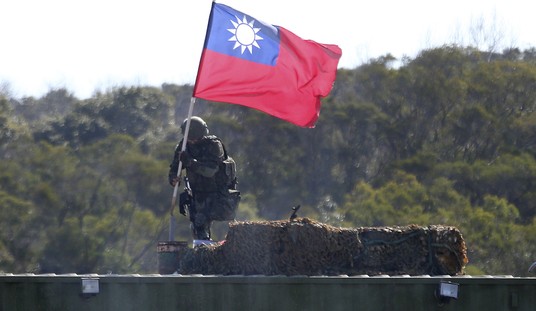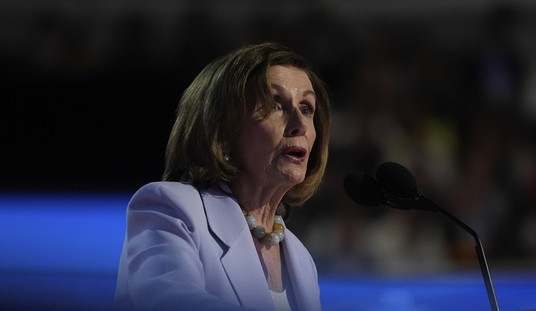Many Americans aren’t old enough to remember when the Iron Curtain was Moscow’s drapery of choice. It’s time for a refresher course.
Superpower rivalry started almost as soon as the “good” war, World War II, ended. Most Americans were indifferent, until the outbreak of the Korean War in 1950. That really brought the Cold War home to Main Street.
Americans were worried that the invasion of South Korea was just the first skirmish in another global conflict. Having just saved the world a few years earlier, they weren’t excited about having to do it again, particularly since this time both sides had the atomic bomb.
The U.S. also had Hollywood, and Tinsel Town cranked up the cameras and marched off to the Cold War. Here are the 10 movies that give a very good feel for what that war was all about.
10. Invasion U.S.A.
This 1952 Cold War classic (not to be confused with the 1985 Chuck Norris epic in which he karate chops his way through transnational terrorists threatening the homeland) was one of the first films from a major studio to exploit emergent war hysteria. Columnist Hedda Hopper declared, “It will scare the pants off you.” At the time, she was probably right. In retrospect, the film, which cuts-and-pastes a lot of stock military footage, is pretty laughable. A great drinking game would be just pointing out all the scenes that don’t make sense, like when “enemy” paratroopers descend on Washington, D.C., jumping out of what are obviously U.S. military planes. Still, the film made its point. Americans couldn’t be indifferent to the menace from Moscow.
http://www.youtube.com/watch?v=T5xcVxkTZzM
9. The Thing
No, not John Carpenter’s 1982 gross-out remake, but the original sci-fi scare-fest, where a band of intrepid Americans do battle with an alien invader at a remote Arctic research station. This film (like many science fiction films of the time) was a metaphor for the nightmare of confronting the Soviet threat. The alien was the “other,” a terrible outside invader threatening our security, peace, and tranquility.
Unlike Invasion U.S.A, The Thing from Another World (1951) is extremely well-made and compelling cinema, produced by A-list Hollywood legend Howard Hawks. The scientists in the movie are a pretty useless lot, arguing that the creature shouldn’t be harmed but studied, even as the body count adds up. In the end, it’s the all-American GIs who take charge and save the human race. The message is pretty clear: America needs to buck up, roll up its sleeves, and start defending freedom like it did in World War II.
8. The Manchurian Candidate
The 1962 suspense thriller (badly remade in a 2004 film starring Denzel Washington) reflected the shift in Cold War concerns—from worrying about being invaded, to paranoia over internal subversion. An American soldier captured during the Korean War is handed over to the Russians. After a good brainwashing, he is returned to the United States, programed to kill a popular presidential candidate as part of convoluted plot to put Moscow’s man in the White House. Premiering in the shadow of the Cuban Missile Crisis and shortly after the “Red Scare” hysteria of the late 1950s, it had a lot of Americans looking over their shoulders and wondering if the real enemy might be their next door neighbor.
http://www.youtube.com/watch?v=HGqiVOqxpOo
7. Seven Days in May
By the mid-1960s, Americans began to worry that the Cold War confrontation with the Soviet Union might turn the country into a “garrison state.” In his farewell presidential address, “Ike” had issued his warning about an unchecked “military-industrial complex” undermining our liberties and democracy. Many shared that concern, and no film captured it better than Seven Days in May. In this 1964 thriller, U.S. military leaders plot to overthrow the president because he had the audacity to suggest nuclear disarmament talks with the Russians.
6. The Bedford Incident
This now largely forgotten 1965 film reflected a critical turning point in the Cold War. During a “cat and mouse” game on Arctic patrol, a U.S. Navy destroyer and Soviet submarine inadvertently fire on one another. This was one three films from Columbia Pictures tapping American anxiety about the escalating nuclear arms race. The others were Dr. Strangelove (1964) and Failsafe (1964).
Although The Bedford Incident is the least remembered of the three, it is actually the most engrossing, filled with interesting characters and real drama. The message of all these movies—“no good can come of this”—was deeply pessimistic. In many ways, this film foreshadowed the Vietnam War. The popular image of the American had plummeted from the days when GIs saved us from the space aliens. It was a sign of a growing malaise that Americans were tired of carrying the burden of global leadership.
5. Rambo: First Blood Part II
No film marks an appropriate bookend for the end of the Cold War than this box office blockbuster. In the first Rambo film (1982), Sylvester Stallone plays the stereotypical burned-out Vietnam veteran. In the 1984 sequel, he is transformed into action superhero. Dispatched back to Vietnam on a secret mission, he rescues long-forgotten American POWs and in the process kicks some Russian butt. This film reflected the renewed American optimism and confidence of the Reagan years. In response, the Soviet film industry debuted a Russian version of Rambo, shortly before the Warsaw Pact collapsed in 1989.
American films did more than just mirror the geopolitics of Cold War confrontation; they also reflected how the struggle shaped popular culture.
4. Dr. Strangelove
No list of Cold War cinema would be complete without this 1964 Stanley Kubrick classic. Kubrick started out to make a serious movie similar to Failsafe, but found the logic of nuclear confrontation so absurd he decided the whole thing would work better as a comedy. With iconic characters and classic lines like “Gentlemen, you can’t fight in here. This is the War Room,” the film marked the emergence of the swinging ‘60s, when Americans were more interested in rock-n-roll and mini-skirts than the Cold War. Serious stuff like wars was for bores.
3. The Atomic Cafe
This 1982 documentary vacuumed-up newsreels, television news footage, military and civil defense films, commercials and radio and television program to create a collage of Cold War popular culture. It lampoons everything from instructional movies like Duck And Cover to an Army training film in which the narrator declares, “When not close enough to be killed, the atomic bomb is one of the most beautiful sights in the world.” It manages to make Cold War fears seem pretty silly.
2. Red Dawn
The original 1984 film is essentially a heavily armed version of The Breakfast Club (1985). Its take on Communist invaders is the ultimate Hollywood hoot. And it was one of the highest grossing films of the year–a rare moment in modern popular culture when Tinseltown depicted being all Reagan-like as cool.
1. Blast from the Past
This 1999 comedy starring Brendan Fraser and Alicia Silverstone tells the story of a family that descends into their bomb shelter during the Cuban Missile Crisis and doesn’t come out until the Cold War is over. This film is as watchable for making fun of Cold War paranoia as it is for mocking the vapid materialistic malaise of post-Cold War California.
*****
Playing transnational chess with Vladimir Putin may never inspire movies like these. But all of them are worth watching again, if for no other reason than to remind us that, though there are times when we may want to withdraw from the rest of the world, the world rarely leaves us alone. What the world does, and how we react, deeply influences who we are and how we feel about being American.









Join the conversation as a VIP Member